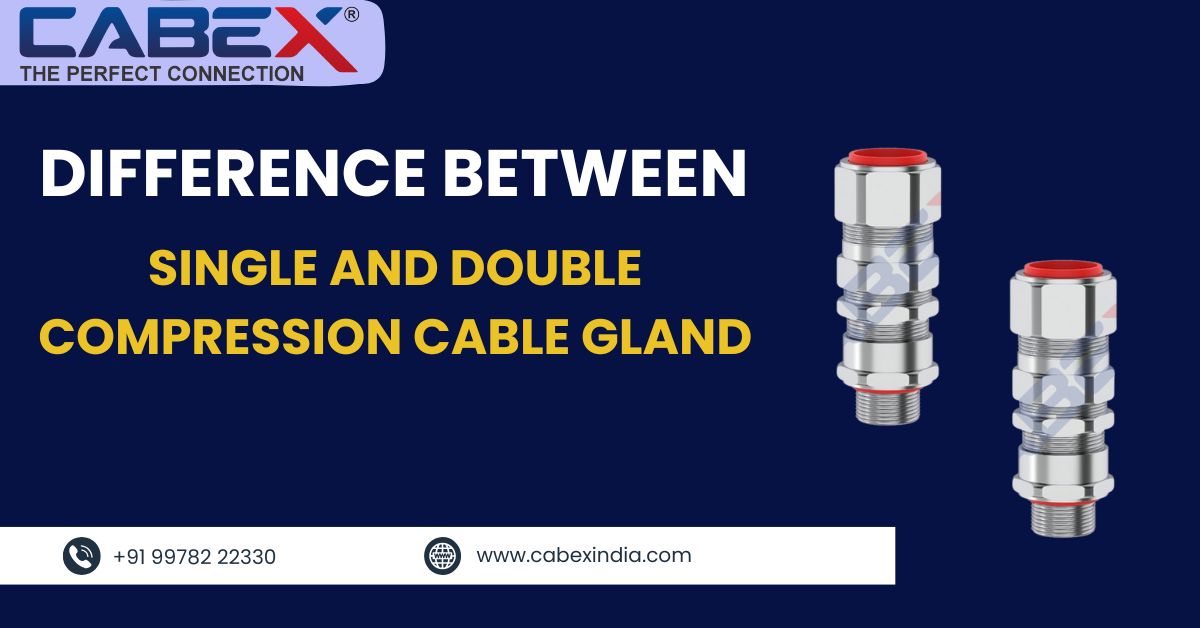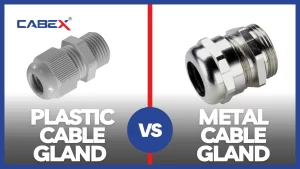Cable Glands play a crucial role in ensuring the safety and reliability of cable connections in electrical installations. Among the various types of cable glands available, Single and Double Compression Cable Gland is widely used in industrial and commercial settings. Understanding their differences helps in selecting the right gland for specific applications, enhancing both safety and efficiency.
What is a Cable Gland?
A cable gland is a device designed to secure and seal the end of an electrical cable to prevent moisture, dust, or debris from entering the enclosure. It also provides strain relief and ensures the continuity of the cable’s electrical performance. Cable gland reducers are often used alongside these glands to reduce the entry size of the gland, accommodating smaller cables when necessary.
Single Compression Cable Gland
A single compression cable gland compresses only at one end, typically where the cable enters the gland. It offers basic sealing and mechanical retention, making it suitable for low to medium-duty applications. These glands are commonly used in indoor environments or less demanding industrial conditions.
Key Features of Single Compression Gland:
- Seals only at the entry point.
- Suitable for smaller cables or indoor use.
- Provides moderate mechanical support.
- Easier to install and cost-effective.
Double Compression Cable Gland
A Double Compressor Gland, on the other hand, offers superior sealing by compressing both at the entry and exit points. This dual compression provides enhanced mechanical strength, making it suitable for heavy-duty and hazardous environments where cable protection is critical.
Key Features of Double Compression Gland:
- Seals at both the entry and exit points.
- Ideal for outdoor and hazardous environments.
- Provides better strain relief and mechanical protection.
- Offers superior sealing against dust, moisture, and chemicals.
Key Differences Between Single and Double Compression Cable Glands
| Feature | Single Compression Gland | Double Compression Gland |
| Sealing Points | Seals at one point | Seals at two points |
| Strength & Protection | Moderate mechanical support | High mechanical protection |
| Suitability | Ideal for indoor applications | Suitable for outdoor/hazardous areas |
| Cost | More affordable | Slightly more expensive |
| Installation | Easier and faster | Requires more effort but offers durability |
Cable Gland Reducers: Enhancing Compatibility
When working with cable glands, sometimes the gland entry size may be larger than the cable diameter. In such cases, cable gland reducers are used to adapt the gland to fit smaller cables, ensuring a secure and tight seal. These reducers are compatible with both single and double compression glands, providing flexibility and cost-effectiveness in cable management.
Which Cable Gland Should You Choose?
For indoor, low-risk applications: A single compression gland is sufficient.
For outdoor or hazardous environments: A double compressor gland offers better protection and durability.
When using smaller cables in larger glands: Use a cable gland reducer for a proper fit.
Conclusion
Choosing between a single and double compression cable gland depends on the application’s environmental conditions and safety requirements. While single compression glands are cost-effective and easy to install, double compression glands provide superior protection in harsh conditions. At CabexIndia, we offer high-quality cable gland solutions tailored to your needs. Additionally, cable gland reducers from CabexIndia enhance flexibility by accommodating different cable sizes, ensuring a secure and efficient connection.
FAQs
What is the key difference between single and double compression cable glands?
Single compression seals at one point, while double compression seals at both ends for better protection.
Which gland is better for hazardous areas?
Double compression glands, as they offer superior sealing and safety.
Are double compression glands more durable?
Yes, they provide stronger grip and better resistance to harsh conditions.
Are single compression glands cheaper?
Yes, they are more cost-effective for indoor and light-duty use.
When should I use a single compression gland?
For indoor or low-risk environments with minimal exposure.
Follow us:- Facebook, Instagram
You May Also Like: Types of Electrical Wires and Cables , How to Identify Genuine Quality Brass Cable Glands Easily





